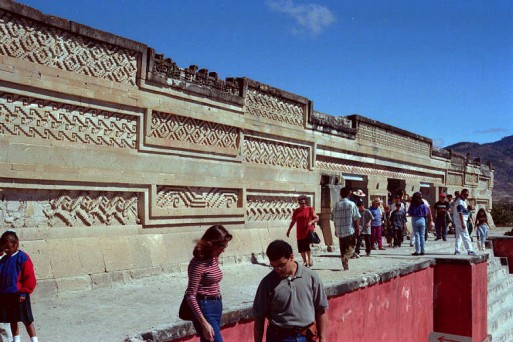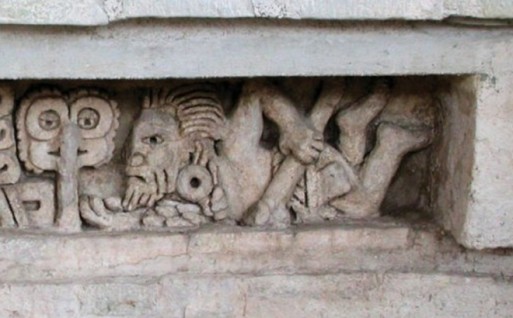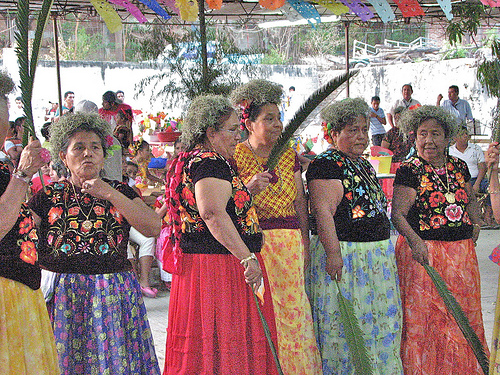Most of us know about the Mayans and the Aztecs, but how many of us are familiar with the Zapotecs? Based in the Oaxaca (wa-HA-ka) region of Mexico, this civilization throve from about 500 BCE to 1000 CE—predating the Aztecs by 1000 years. Yet we know so much less about them, let alone their burial practices. What we do know remains piecemeal, mysterious, and fascinating despite—or due to—its obscurity. Conjecture intersperses with fact, and the cultural significance of many artifacts is still unknown. But the little that archaeologists have gleaned suggests a culture in which life and death were firmly bound together. One informed and maintained the other. They connected generation to generation, often in the same house.
Zapotec tombs, at least those of the wealthy, were often built beneath the family’s residence. Every burial was a home burial, and burying family members under rooms and patios was a standard ritual until the arrival of the Europeans. This intimate burial rite streamlined spiritual practices. According to Dr. Gary Feinman, Curator of Mesoamerican Archaeology and Ethnology at The Field Museum, “In prehispanic Zapotec society, ritual contact between the living and the dead was an important vehicle for communicating with the supernatural; so burning incense or letting one’s blood above the spot where one’s honored ancestors were buried would be expected.” To use your own loved one as a conduit to the divine, rather than a (potentially oppressive) church or institution, strikes me as a much more personal, comforting relationship with the mystical and unknown.
Another vital symbol of this interconnectedness between the living and the dead is the femur. Across Mesoamerica, the thighbone was believed to contain the individual’s essence, so descendants would excavate their ancestors’ femurs. One theory claims that the removal of the bone was a form of dynastic continuation in which the son would take his father’s femur and brandish it as a scepter. (How’s that for a golden crown?) If bloodletting on a burial site enlivens the dead, the femur empowers the living. Dialogue between the two takes a literal, visceral form.
Although these anatomical practices faded out with the ancient Zapotecs, the people living in Oaxaca today still cultivate a closer cultural relation to their ancestors. According to Feinman, “At every wedding and baptism, at which new lives or family members are welcomed, formal visits are made (as part of multi-day ceremonies) to the gravesites of deceased relatives, constructing ties and obligations between those who lived (live) in the past, present, and future.” And similar to the Jazz funerals in New Orleans, Zapotec funerals include music, parades and celebration. Even after colonialism and Catholicism, after globalization and capitalism, the ancient Zapotecs have endured through their descendants, and their deaths are only a continuation of the living.
More from Cultural Perspectives:
- In Living Color: India’s Holi Festival
- Ohlone Shellmound Buried Beneath the Emeryville Shopping Center
- Celtic Dreamlands and Burial Rites

 Blood and Bone Rituals in Ancient Zapotec Burial Rites
Blood and Bone Rituals in Ancient Zapotec Burial Rites





 First the Wealth Gap, Now the U.S. Has a Growing Health Gap
First the Wealth Gap, Now the U.S. Has a Growing Health Gap
 How to Comfort A Dying Loved One
How to Comfort A Dying Loved One
 Our Annual Seven Holiday Gifts for Someone Who Is Grieving, 2024 Edition
Our Annual Seven Holiday Gifts for Someone Who Is Grieving, 2024 Edition














